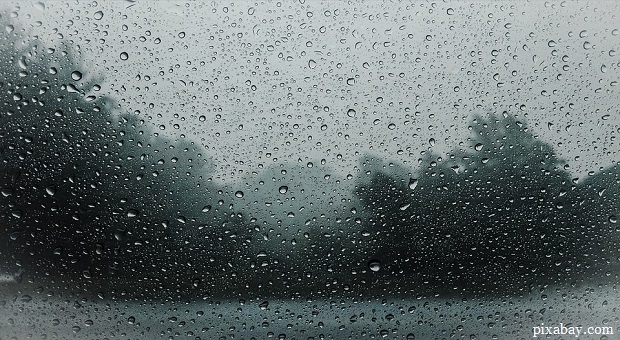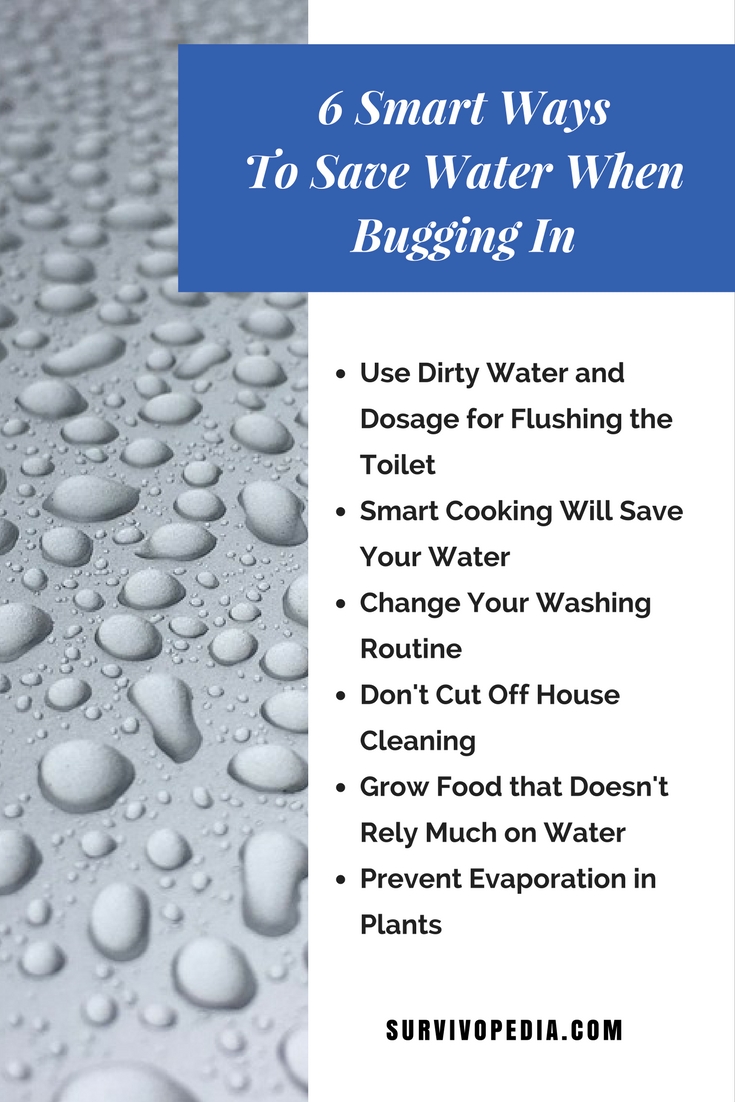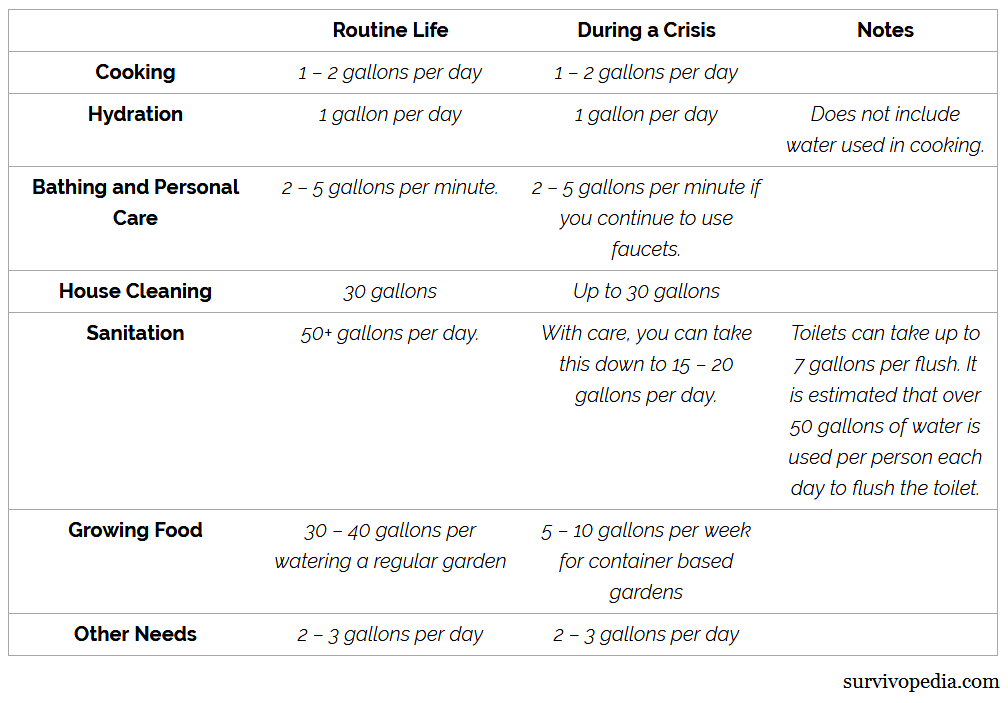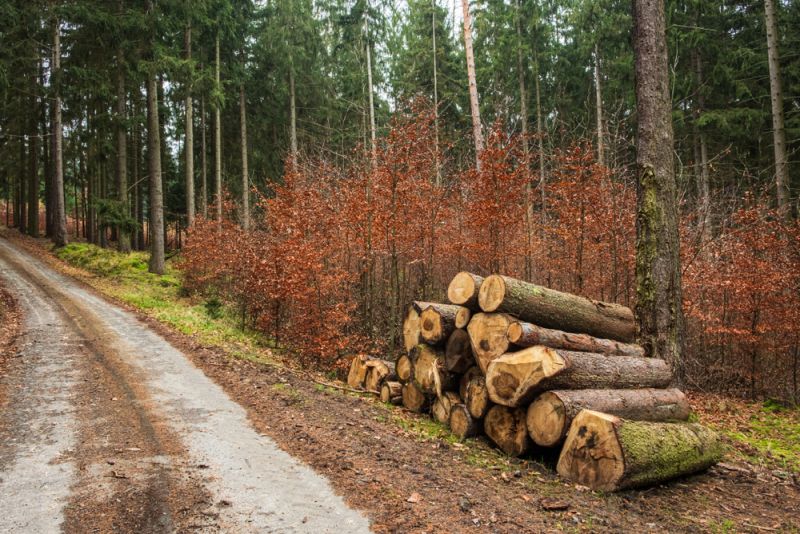If hunkering down is your choice, either due to your living circumstance, or simply to avoid the hordes on the highway, your bug-in bag should have all the essentials you need.
Anything less will not only waste your time, space and money, but will pin your hopes to a fool’s promise, endangering you and others too. And water is one of those issues that you just can’t take easily when bugging in.
You probably know that a single gallon of water weighs about 8 pounds and takes up quite a bit of space. If you are having problems keeping 1-2 gallons in your living space on a regular basis, you’ll find it almost impossible to store enough water away for your long term survival.
This is just one of many reasons why you should only store away 5-10 gallons of water to get you started in a crisis, and devote your prepping to smart management and finding ways to procure water. Pulling water from the air is one of the solutions, and there are several ways you can do it.
Once you pull the moisture from the air, you will still need to make sure it is fit for drinking and bathing. But all of these obstacles can be overcome with solutions that are small enough and easy enough to store in your bug in bag.
Keep reading to see how to solve the water problem when you’re bugging in!
6 Ways to Make the Most Out of Your Water
Even though there are actually thousands of gallons of water sitting in the air around you, actually converting that water vapor into usable water can take a bit of effort.
This Device Easily Turns Air Into Water!
You still need to know how to conserve water and recycle it as much as possible. If you have to fine tune water production systems, you will have a bit more time to achieve that goal.
Use Dirty Water and Dosage for Flushing the Toilet
You might know already that the fastest and easiest way to cut back on toilet water usage is to gather water from other activities such as cooking and cleaning, and then simply dump it down the toilet.
On a day to day basis, you can also fill a ½ gallon milk container with water, cap it up, and set it in the toilet tank. This will take up area that would normally be taken up by water that would be used for flushing the toilet even though it isn’t necessarily needed.
You can add more milk jugs if you find that you want to reduce the amount of water used for flushing even more.
Smart Cooking Will Save Your Water
When preparing meals, combine as many things as possible so that you do not have to waste water. You can also reduce the amount of water used to cook many items by using lower cooking temperatures or other methods.
For example, if you want to make spaghetti or macaroni, try boiling just enough water to cover the pasta. Thermos cooking also offers a number of ways to reduce both the amount of water used to cook food and also the energy required.
Change Your Washing Routine
When it comes to washing your hands and face, there are a number of ways to save water that don’t necessarily rely on pre-moistened wipes or other stores that will run out.
To begin, instead of turning on the tap, and letting it run, pour water into a bowl instead. From there, dip your hands in the bowl and lather up. Once that is accomplished, take a towel or sponge to get the majority of the soap off your face.
Follow up with some additional splashes of water to get the remainder of the soap off your face. From start to finish, you should only need about ½ gallon versus 2 – 5 gallons for each minute that a faucet would be running. You can also use small bowls for brushing teeth and then a larger one for sponge baths.
Don’t Cut Off House Cleaning
Contrary to popular belief, don’t believe that all house cleaning will end in the post crisis world. If you do not keep floors, walls, furniture, and other internal landscape parts clean, you will soon be in a disease filled, hazardous environment.
From that perspective, toilets and sinks will still require water for cleaning. In the case of toilets, you can use leftover water from cooking or other cleaning chores, just as you would for flushing the toilet.
Grow Food that Doesn’t Rely Much on Water
If you are planning to bug in, then it makes sense that any food growing will occur indoors. First of all, switch to a low-water garden so you could grow your food with a minimum consumption of water.
There are also a number of growing methods that reduce reliance on water to well below what you would use in a conventional outdoor garden and also a container garden. This includes utilizing different potting arrangements and also tried and true ways to preserve moisture as much as possible.
For example, just because your container garden is indoors, that doesn’t mean you can’t use plastic mulches or other covers that will prevent water from evaporating back into the air.
Prevent Evaporation
There are also a number of misting techniques you can use when watering plants to ensure they get as much moisture as possible where it is actually needed. For some species of plants, this includes misting under the leaves, since this is where the leaf is actually able to take in the most water.
If the outdoors are dry enough, you will see tree leaves turn upside down so that those pores can take in the rain as quickly as possible. From that perspective, if you mist under the leaves instead of on top, the plant will get more water, and less will evaporate off the top areas that may have wax or some other natural coating to help prevent evaporation.
How Much Water Do You Need Each Day?
Before making any plans for pulling water from the air, you need to know how much water you’ll need per person. Under normal conditions, you can expect to use 80 – 100 gallons of water per day.
Here are some rough estimates to go by based on routine needs in a survival situation compared to routine times:
The Basic Ways to Pull Water from the Air or Ground
There are many people interested in pulling water from the air, or from brackish environments. Some of the most innovative methods are making use of wind turbines or with alternative blade forms.
Even though these systems tend to rely on condensers and coolants, they can still offer some useful insights. If you can design something based on these systems, or integrate passive heating and cooling into the design, you will spend less money and have a system that will work in any emergency type.
Remember that the ultimate survival water purifier and generator must have the following features:
- It must use as little energy as possible
- It must be easy to build and maintain
- Must require a minimum of moving parts in order to reduce energy consumption and the need to replace parts
- Must produce enough water on a daily basis for your needs
- Must be portable or easy enough to move around in case you have to leave your current location or put the equipment in an area where it can gather more water.
Condensation Methods
These methods are designed to work when there is a sudden change in air temperature, which affects how much water vapor the air can hold. Typically, when temperatures drop, this will increase the odds of precipitation.
There are many different ways to use condensation methods to retrieve water from outdoor settings, however they may not yield as much water, if any from indoor locations. Regardless of the system that you use, the hours before sunrise are apt to yield the most water because they are the coolest hours of the day.
Pulling water from the earth is actually fairly easy. Just dig a hole and place a bowl, pot, or cup in the center of the hole. Next, spread some plastic sheeting across. Make sure that the edges of the plastic are sealed off. Use a rock in the center of the plastic so that the lowest point of the plastic is aimed into the cup or bowl. As the ground temperature changes, water vapor will rise up and be trapped by the plastic.
From there, the water droplets will roll down to the center point of the plastic and finally drop into the vessel waiting below. Depending on the moisture levels in the soil, you can collect as little as a cup or as much as several gallons of water in a single night.
Water stills can also be very useful if you have used cooking water or other water that needs to be purified before it can be used for consumption and bathing. Basically, in these systems, the water may be in a bowl, cup, or even housed in the ground as in the method listed above.
For this version, the plastic tent will have an upward high point instead of a low point. As the sun or other heat source causes an increased temperature inside the tent, water vapor rises up and encounters the top of the tent.
From there, water droplets adhere to the sides, and then to waiting cups along the inner ring of the plastic. This water will, or should be, free of chemicals, heavy metals, bacteria, salts, and minerals. Therefore, not only can you use this system to produce fresh water, you can also use it as a final stage for purifying any water that may be on hand.
As with other systems that use plastic, always make sure that the plastic remains clean and free of bacteria, mold, mildew, or other forms of soiling that can make the water unfit to drink. For long term usage, you may prefer a glass tent, however this will weigh more and require additional support structures for daily needs.
Once you start your indoor container garden, simply enclose the entire area in plastic (basically you will be creating an indoor greenhouse), and then make depressions in the roof that will point to cups or pots waiting below.
This method is one of the most passive and easiest methods for gathering water from the air, and will also help conserve overall moisture used for growing food.
Desiccants
You probably know that silicon and table salt are two commonly available desiccants. If you are seeking to make water for consumption, bathing, or other purposes, then use salt as the desiccant in your system. If you look at some commercial atmospheric water generation systems, you will find that many different desiccants are used for this purpose.
When choosing the chemicals, consider how much energy it will require to remove the chemical from the water, and also how much water yield you will get with each desiccant when compared to table salt.
Air Pressurizers
These systems are somewhat similar to a modern air conditioner in the sense that they blow air over cold coils in order to reduce the air’s temperature, which causes moisture to drop into a waiting receptacle.
While these systems can pull a good bit of water from the air, the coolants can be quite expensive, as can the electricity required to run them. In a bug-in situation where you have limited power and resources, this system may not be a viable option.
Even if you can purchase a miniature system that runs on batteries or solar power, it will not produce as much water as other methods. It may also be very noisy and break down sooner rather than later.
Think in advance about how you can take advantage of new technologies and ideas to make your bug in location more suitable from a food, water, and breathable air perspective.
There are options open to you, and it only takes will to experiment with new materials and concepts to put up a comprehensive plan that would later save you and your family!
This article has been written by Carmela Tyrell for Survivopedia.












radarphos | October 19, 2017
|
I’ve been experimenting with this issue using a rain gauge (a gallon ice cream bucket) and using a 10X10 fibered plastic tarp. to catch rain. I assumed that my actual rain catch area would be 9 ft x 9ft, because I would use wood poles on 3 sides along a gentle slope in my back yard that would lead to 5 gal. buckets that I would dig a hole in my yard to place the buckets so that They could catch the rain dripping off the tarp. I calculated mathematically the square inches of my rain capture part of the tarp, and then calculated the cubic inches of rain it could capture depending upon the rainfall on two different days that I was using my rain gauge. What I learned is that a 1 inch rain would produce 50 gallons of water that for a family of 3 adults would last at 1..5 gallons per person for about 11 days. 50 divided by 1.5 gallons, divided by 3 people = 11 days of water. It would also require about 10 five-gallon buckets and the sheet plastic (< $20). The buckets can be bought at a store (food grade is best), though the bakery I work at charges $2.50 for a used bucket that held frosting-icing. One of the rains I measured offered 2 and 5/8 inches of rain. A second one based on weather forecast predicted a 1.5 inch rain, but in my backyard I only got a third of an inch of rain.
Catching free-fall rain on clean sheet plastic, even if you let the first rain minutes wash the air and the plastic is far healthier than catching rain from a roof down-spout, because then the rain washes over any bird poop on the roof, any dead debris in your gutters, etc. But to use downspouts you still need buckets (and the more you have, the better).
Here is my point to all of this. Catching rain is probably the easiest way to get "fresh" water (excepting that even rain falling through air that is polluted will pick up some of those pollutants. If you are certain you are going to get a downpour, you could give the rain ten-minutes to clean the air, and then start catching rain) In an emergency though, you might want to just save any water you can get. My area (S WI) will usually have annually between 1 -3 months with no significant rain.; and sometimes during winter we will go for a month or longer with no snow. In fact the rains that I measured came after a 12 week drought.
If you need emergency water storage, if you have boxes and larger plastic bags, you can line the boxes with plastic bags and store water. You can even use drawers in your house and line them with bags.. While bag-plastic is not food grade and not the safest way to try to store water, My options if I didn't catch my own rain would be to go across the street with a bucket and haul back water from a rain-pond (that fills from the rain sewage system), which means it has picked up the gas, spit, and junk off the street, then went down the sewer that the raccoons use to enter neighborhoods at night, then it enters the pond where the ducks swim, and it sits there. My opinion is that rain water (PH =7) is cleaner than any other water, including my tap water with its chloride and flouride besides all the other stuff in it suggested by scientific studies..
I've got buckets and I've got sheet plastic (and decided to stick with durable re-usable fibered sheet tarps.(for emergency backup). The problem with water in a bad emergency is how far do you have to go to get dirty water from somewhere? I would just as soon go to my own backyard. I think you should too.
By the way, if you have electricity, but not good water from your tap as has happened in places that had spills, A dehumidifier that might cost under $200 can take moisture out of the air in your home and fill a container or bucket with clean water. Many people with basements use dehumidifiers to dry out the air (to avoid molds forming on wood). Dehumidified air is something that your air conditioner also does; and in a moderate climate a dehumidifier can be almost an air-conditioning substitute (with a fan also blowing) depending upon how closed up you home may be.
The big questions to what I am suggesting is how many 5-gallong food grade buckets/lids will you acquire and store?. And then, how many 10×10 tarps will you buy to use in an uncertain future. I ask about the tarps because a 1/8th inch rain will give you only about 3 gallons of water. It could be a real life saver if the rain came at a desperate time, but it is not going to last very long. So, 2 tarps with a 1/8th inch rain will give you 6 gallons of water, and the more tarps the better for brief rains. If that sounds like too much trouble, then ask yourself how much trouble it would be for you to walk a mile to a water source carrying a 5 gallon bucket of water (that weighs about 43 pounds (with the weight of the bucket). I carry these at work, usually one in each hand. They are heavy. But then there is the other problem–are you out there alone? You got a water bucket? Plenty of others won't have one. Maybe someone will offer to carry your water bucket, and then run off with it. What will you do?
Ginger | October 19, 2017
|
another way of saving water when gardening is to set up an aquaponics system and raise fish and vegetables in a hoop house enclosed natural organic eco-system. This will save gallons of water over raising in containers. I am in the process of putting one in for my side yard – a 12 X 24″ hoop like Texas Prepper2 used in his video “Greenhouse”. It isn’t expensive to set up or difficult to set up. This will let me have a year-round growing season here in Houston, TX>
John | October 23, 2017
|
Hi Ginger, Where did you learn how to do a Hydroponics set-up?
Richard Goldman | October 22, 2017
|
Quick question that I can’t find an answer to. Millions and millions of pristine swimming pools all over the USA with billions of gallons of clean, “over-treated” water. How can this resource be purified to drinking-quality? Everything online says it can’t be done. Seems like nanny-state nonsense to keep lawyers in business. It’s H2O, so what has to be done to make it safe to drink???